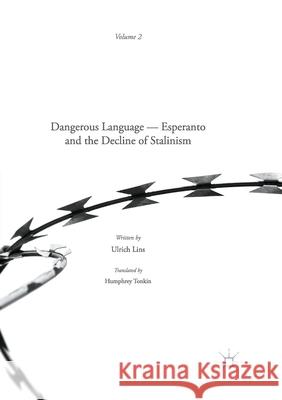Dangerous Language: Esperanto and the Decline of Stalinism » książka
topmenu
Dangerous Language: Esperanto and the Decline of Stalinism
ISBN-13: 9781349958016 / Angielski / Miękka / 2018 / 198 str.
Kategorie:
Kategorie BISAC:
Wydawca:
Palgrave MacMillan
Język:
Angielski
ISBN-13:
9781349958016
Rok wydania:
2018
Wydanie:
Softcover Repri
Ilość stron:
198
Waga:
0.27 kg
Wymiary:
21.01 x 14.81 x 1.17
Oprawa:
Miękka
Wolumenów:
01
Dodatkowe informacje:
Wydanie ilustrowane











